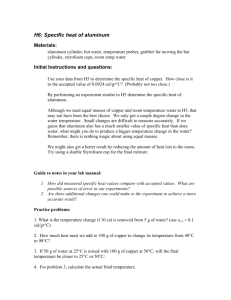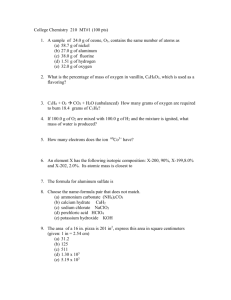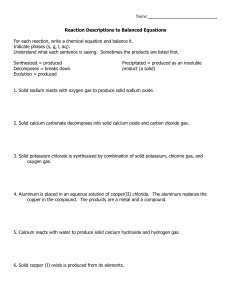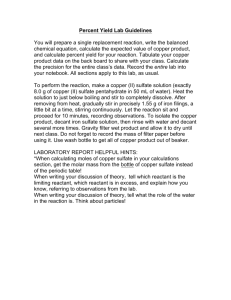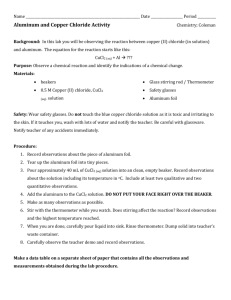Name UNIT 8 - REVIEW 1. a. Balance this rxn: barium phosphate
advertisement
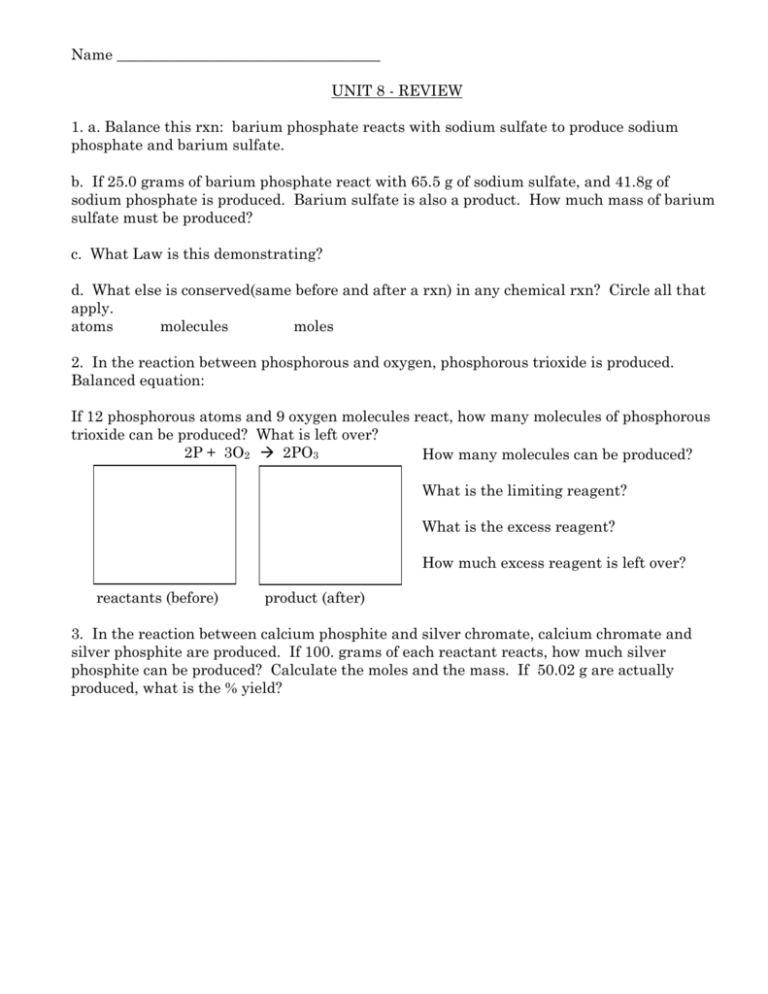
Name ___________________________________ UNIT 8 - REVIEW 1. a. Balance this rxn: barium phosphate reacts with sodium sulfate to produce sodium phosphate and barium sulfate. b. If 25.0 grams of barium phosphate react with 65.5 g of sodium sulfate, and 41.8g of sodium phosphate is produced. Barium sulfate is also a product. How much mass of barium sulfate must be produced? c. What Law is this demonstrating? d. What else is conserved(same before and after a rxn) in any chemical rxn? Circle all that apply. atoms molecules moles 2. In the reaction between phosphorous and oxygen, phosphorous trioxide is produced. Balanced equation: If 12 phosphorous atoms and 9 oxygen molecules react, how many molecules of phosphorous trioxide can be produced? What is left over? 2P + 3O2 2PO3 How many molecules can be produced? What is the limiting reagent? What is the excess reagent? How much excess reagent is left over? reactants (before) product (after) 3. In the reaction between calcium phosphite and silver chromate, calcium chromate and silver phosphite are produced. If 100. grams of each reactant reacts, how much silver phosphite can be produced? Calculate the moles and the mass. If 50.02 g are actually produced, what is the % yield? 4. If 1025 g of chlorine and excess calcium iodide react, calcium chloride and iodine are produced. How much calcium iodide would be used to completely react with the chlorine? 5. Use the following data and answer the questions below: Mass of beaker mass of beaker with copper mass of aluminum before mass of aluminum after 125.9 g 132.2g 3.85g 2.89g A student placed a piece of aluminum in copper(I)nitrate solution. Copper metal precipitated and aqueous aluminum nitrate was produced. a. Using the data above calculate the mass and mols of aluminum that reacted. mass of aluminum ______________ mols of aluminum __________________ SHOW ALL YOUR WORK!!! DON'T JUST WRITE THE ANSWER!!!!! b. Using the moles of aluminum above, determine the theoretical yield of copper. Balance the reaction 1st, then use the BCA table. Calculate the mols and mass of the copper. balanced reaction: **4 decimal places for your moles!!!! B C ______________________________________________________________________________________ A mols of Copper __________________ mass of copper____________ (Show your calculations!!!!!) c. Using the data above, determine the actual yield (in g) of copper. Show your work!!!!!!! d. Determine the %yield of the copper:

